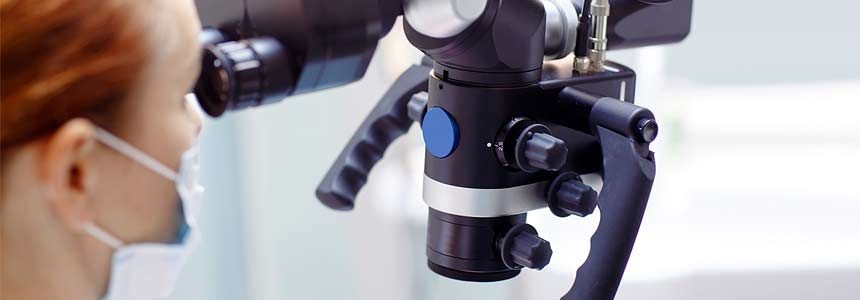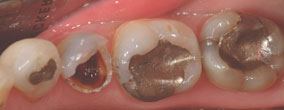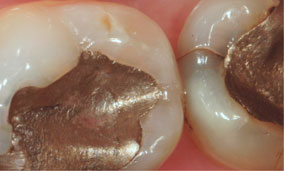
Using a similar microscope that an ophthalmologist uses improves your dental examination when required, the inspection and provision of dental restorations with an improved precision and the fit and finish of most restorative procedures.
View of fillings at x2 magnification with Microscope Dentistry. The first image is twice the normal size of real teeth. Working as a dentist at this magnification is a great help.

View of fillings at x8 magnification with Microscope Dentistry. However when detail is required for diagnosis or for maximum precision x8 magnification will facilitate greater control.

In addition to allowing precise, close up work, the microscope directs a beam of light directly on the teeth, minimising the glare and maximising the detail. Essential for modern standard of endodontics, we have been using the dental microscope now for over ten years for routine dental care. Many dentists use air-driven “hand-pieces” (the dental term for “drills”). While acceptable for many procedures, these “whiney sounding” powered hand pieces all have a degree of non-concentricity; they do not rotate perfectly smoothly.
For the most precise aspects of restorative procedures, we use electric hand-pieces. The combination of magnification and the ability to finish procedures to a fine standard results in more precise interfaces between your tooth and your new restoration. This will bring more comfort to you as well as an improved long term prognosis.